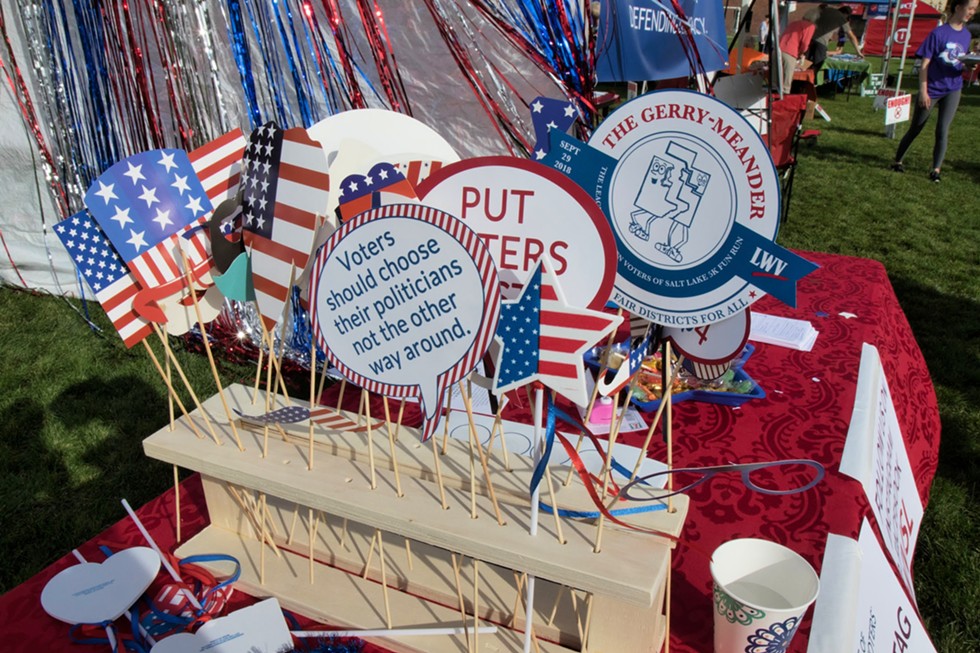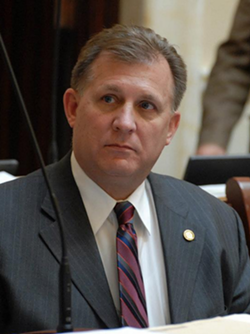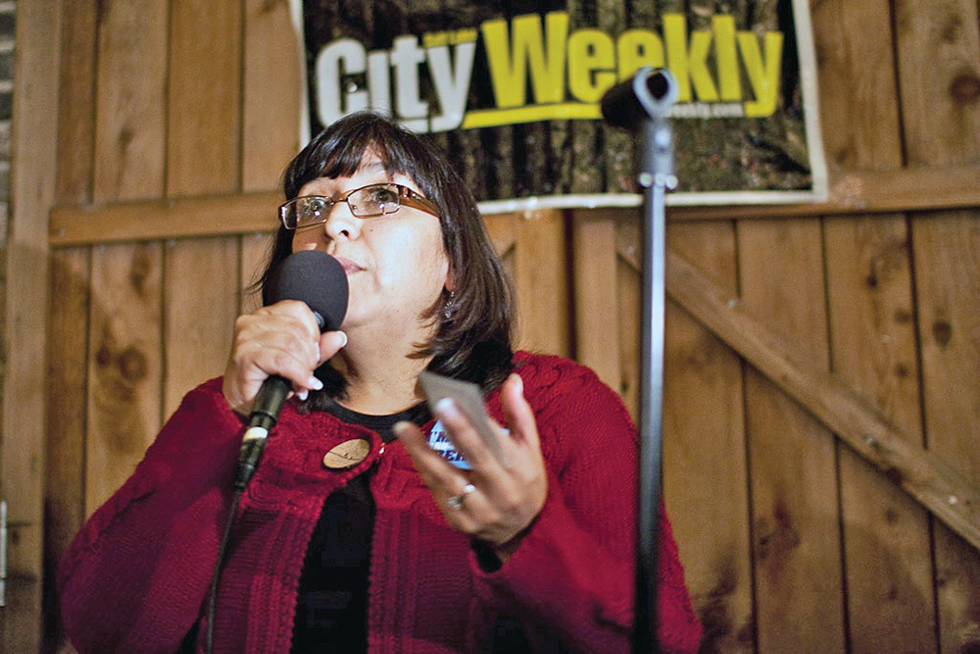Year
They knew it would happen. But the timing—and the optics—are so interesting.
The Legislature is huddling with leadership to stop a citizen redistricting initiative in its tracks. Following the evisceration of two other citizen-driven initiatives—Medicaid expansion and medical cannabis—absolutely no one is surprised. Total repeal is unlikely, but something will happen, because history shows the Legislature is dead set against initiatives.
Initiatives allow registered voters, if a minimum number sign a petition, to force governments to hold a binding vote on the issue. While that happens in Utah, the Legislature inevitably jumps back in after the vote and "fine-tunes" the law.
The fine-tuning of the redistricting initiative began within days of a Y2Analytics poll showing that 62% of voters think their legislators pay little or no attention to them as constituents. And a whopping 52% of strong Republicans say they're ignored. If they were listening, wouldn't they leave Proposition 4 alone?
A February Dan Jones & Associates poll has 55% of voters saying the Legislature should neither repeal nor change the initiative. But what's the downside for lawmakers? Probably not losing their elections.
In 2018, 95% of incumbents in Utah won their elections, according to Ballotpedia. That percentage remained high in every state. Texas had the lowest at 81%.
Still, citizens have long exercised their right to thumb their noses at Utah's patriarchal Legislature. And they should be concerned when they're told to go to their rooms.
Utah became the second state in the union in 1900 to establish an initiative and referendum process, according to the Initiative and Referendum Institute. Still, it took 16 years before the law was implemented. The first successful initiative came about in 1960, establishing a merit system for county sheriff's deputies. Then came the hunting lobby.
Hunters, trembling with fear of the animal rights movement, persuaded the Legislature in 1998 to make signature-gathering a lot more difficult. Then they managed to pass a constitutional amendment requiring that any animal protection initiatives pass by two-thirds vote.
Difficult? Until 2014, initiatives had only a 25% success rate. But ask most legislators and you'll get these comments: Utah could become like California after Proposition 13, which slashed and froze property taxes, passed. Since 1917, Californians have voted on 379 ballot initiatives, though 65% of them were unsuccessful.
Utah is no California. Duh. In California, successful ballot initiatives can only be changed or overturned by another initiative or by the Supreme Court—not by politicians.
Meanwhile, politicians in the Beehive State are madly chipping away at Prop 4. To be clear, this is an initiative to simply create a nonpartisan advisory commission, which would draw maps after the decennial Census and send them to the Legislature to approve. Here comes the G-word—gerrymandering. It's a word that Sen. Curtis Bramble, R-Provo, who's sponsoring the upcoming bill on Prop 4, says initiative proponents can't define.
The Oxford Dictionary can. "To gerrymander is to manipulate the boundaries of (an electoral constituency) so as to favor one party or class."
Prop 4 never specifically mentioned gerrymandering, which may well have confused voters who instead saw a measure called The Independent Redistricting Commission Initiative. There was a lot of talk about Better Boundaries, too, but that wasn't on the ballot either. Better Boundaries is the bipartisan group that supported the initiative with boots on the ground and funding.
Despite the ballot confusion, the initiative squeaked by—even as opponents worked to persuade signers to withdraw their support—and has become a cause célèbre since. And it was no small feat to gather more than 113,000 signatures in 26 of the 29 Senate districts.
Legislators are totally baffled as to why people are so upset about redistricting in Utah, and they don't like being called out for it.
"I will grant them that the House and Senate weren't too problematic," Rebecca Chavez-Houck, Better Boundaries' executive director and former state representative, tells City Weekly. But then there are the congressional districts. Can you say pizza slice or donut hole?
Legislators decided it was a great idea to create an urban-rural mix for congressional districts, forcing Salt Lake City to stretch down into St. George and over to Tooele for District 2. And District 4 takes Salt Lake City and goes down to Juab and Sanpete counties. In fact, cities like Salt Lake and Holladay are sliced into multiple congressional districts. That's called the "pizza slice" theory of redistricting, and in Utah, it creates majority Republican districts every time.
Legislators considered a donut-hole configuration, which would have created all-urban or all-rural districts, but here in Utah, rural is king. Democrats charge that the idea was to dilute their influence. Good job.
Now, legislators are miffed that they might have to consider—you know—the public. "It is a lot harder to do than it sounds," House Speaker Brad Wilson, R-Kaysvilile, told The Salt Lake Tribune last week.
Map-making hasn't been that hard for other independent commissions around the country, but maybe gerrymandering has been a heavy lift for the Legislature.
The U.S. Supreme Court has had trouble pinning down what partisan gerrymandering is, while racial gerrymandering is pretty clear. So, the high court punted the issue back to the states. Too bad for one-party states, because the court says that the drafters of the Constitution understood that politics would play a part in district drawing.
A high court decision did allow Arizona voters to remove the authority to draw election districts from their legislature and place it in an independent commission. But Utah isn't Arizona, either. The Utah Constitution gives sole authority for drawing districts to the Legislature.
So change the Constitution? That's a stretch, because any constitutional provision would have to be approved by a two-thirds vote in the Legislature before it's placed on the ballot. Not likely to happen.
Prop 4 just gives voters a tiny bit of say-so on the process. And, Chavez-Houck insists that it's all constitutionally sound. "You want to bring up the Constitution? Then let's start with people being co-equal through initiatives," she says. "They want to take people down the constitutional rabbit hole.
"It's been a year-and-a-half and no one has seen a constitutional note saying the initiative was problematic. We couldn't have gotten the initiative on the ballot if it didn't pass muster. People are welcome to ask the lieutenant governor what he thinks. He's an attorney and they took an ardent look."
Chavez-Houck sees one of the sticking points as resources. The Prop 4 law asks legislative staff to help the commission, but the Legislature could appropriate funds for them to work with. Problem solved.
There's also the exclusivity argument, but Chavez-Houck says there's precedent to sharing the process. From 1955 to 1971, Utah used county-based citizen commissions to draw four cycles of districts.
Lawmakers don't like the new law requiring that they tell the public why they accepted or rejected the commission's district maps. They just want to say yea or nay without explanation—like they're permitting the public to play with the maps.
"This is the people's commission," Chavez-Houck says. "It says you shall not partisan gerrymander. It has to be prescriptive, not permissive."
Ultimately, the Legislature has the right to draw the boundaries—even if an independent commission offers them some ideas. The big question is, why are they so defensive, so hurt and so personally offended?
"They need to look at this through an aspirational lens," Chavez-Houck says. "In a way that builds up confidence in the public. Here you have this great opportunity to have people not question the process."
And yet, it appears likely to be an opportunity lost.




